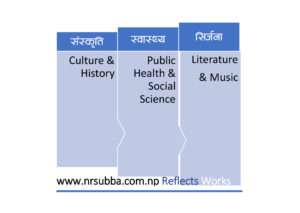
A study has shown a very interesting finding of depression in Africa. Women residing in water inadequate areas suffered from depression. The study finds an association between depression in women and household water insecurity. The women associated at 70% greater risk in water insecurity rural Ugandan areas (Cooper-Vince et al., 2018).
Uganda developed a reliable and valid tool to measure a Water Insecurity in Southern Uganda. The tool Household Water Insecurity Access Scale (HWIAS) used to measure water insecurity in the households(Swindale & Bilinsky, 2006). The tool had an 8 self-report and 8-item measure of household water insecurity with score 0-24. The tool designed to bring out perception of the quality, the quantity of water, and anxiety about the uncertainty of water (Tsai AC, Kakuhikire B, Mushavi R, Vořechovská D, Perkins JM, McDonough AQ, 2016).
The Hopkins Symptom Checklist-Depression Subscale (HSCL-D) assessed the depression in the past week. The HSCL-D has 15 item of self-report symptoms of anxiety and depression.
This study finding suggests the need for focal screening of depression in water-deprived households. It indicates that water facility will improve the women’s mental health (Cooper-Vince et al., 2018). We can apply the variables in the study to assess the mental health state of women living in water insecure areas in Nepal.
References
Cooper-Vince, C. E., Arachy, H., Kakuhikire, B., Vořechovská, D., Mushavi, R. C., Baguma, C., … Tsai, A. C. (2018). Water insecurity and gendered risk for depression in rural Uganda: a hotspot analysis. BMC Public Health, 18(1), 1143. https://doi.org/10.1186/s12889-018-6043-z
Derogatis LR, Lipman RS, Rickels K, Uhlenhuth EH, C. L. (1974). The Hopkins symptom checklist (HSCL): a self-report symptom inventory. Behavioral Science, (19), 1–15. Retrieved from https://doi.org/10.1002/bs.3830190102.
P., S. A. B. (2006). No TitleDevelopment of a universally applicable household food insecurity measurement tool: process, current status, and outstanding issues. Journal of Nutrition, 136, 1449s–52s. Retrieved from http://www.ncbi.nlm.nih.gov/pubmed/ 16614442
Tsai AC, Kakuhikire B, Mushavi R, Vořechovská D, Perkins JM, McDonough AQ, et al. (2016). No TitlePopulation-based study of intra-household gender differences in water insecurity: reliability and validity of a survey instrument for use in rural Uganda. Journal of Water Health., 14, 280–292.
